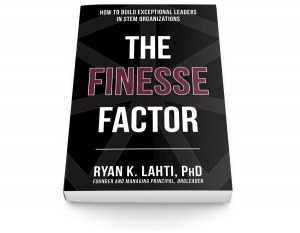
How effective is your company, division or department? I’m not merely referring to the efficient use of resources such as money, technology and materials. Organizational effectiveness is broader than that. It involves setting and accomplishing the right objectives with the right resources in the right way.
Since organizational effectiveness has more than one determinant, I want to share two key lessons I’ve learned that can help you whether you oversee an entire enterprise or a department. These takeaways are especially applicable if you’re moving into a new role in an organization that’s underperforming.
Takeaway 1: Design Is Not Structure
A common way to go awry when optimizing the effectiveness of an organization is by equating organizational design with creating its structure (typically represented by an organizational chart). No matter what your preferred design approach is, keep a core tenet in mind: Solid organizational design involves considering a variety of elements. Structure is simply one of them.
Organizational design elements include:
- Strategy: The way the organization plans to grow and participate (or compete) in its market
- Environment: The external and internal context of the organization (e.g., the economy, government regulations, corporate transformation and culture)
- Work requirements: The integral activities needed for the organization to operate
- Structure: The organizational form that coordinates how work is done (e.g., divisional, functional or matrix)
- Talent: The members of the organization who possess and use needed capabilities to accomplish work
- Processes: The systems and procedures that monitor and facilitate the flow of work
Sound organizational design aligns these elements to achieve targeted objectives. Such a design allocates talent along with other resources to the appropriate areas to execute the strategy. When this happens, there are clear benefits. For example, research has shown that organizational alignment can be a competitive advantage that produces “supernormal profits,” and that it can play “an important role in maintaining high levels of work engagement.”
As you seek to optimize the design of your organization, try these five suggestions:
1. Focus initially on strategy. While strategy is a fundamental element, driven executives frequently jump to other design elements before giving it enough consideration.
2. Weigh the capacity of talent. The design should facilitate the productivity of employees and managers. An overly complicated design can be cumbersome for stakeholders, which can hinder productivity.
3. Use caution when creating structure around people. Reduce the likelihood of redesign in the future by examining work requirements prior to organizational talent. Expect to make some structural adjustments for the people you have, but avoid using people as the sole basis for design.
4. Don’t expect 100% perfection. There is no such thing as the perfect design for all organizations. Making trade-offs is a normal part of the process.
5. Measure success based on implementation. Even your ideal design can fail if you don’t adequately anticipate how its implementation could affect the organization. Create a change management plan to methodically put the design in place.
Takeaway 2: Organizational and Leadership Effectiveness Are Reciprocal
While the best design enables an organization and its leaders to achieve business objectives, exceptional leaders can accelerate this outcome. For my book, The Finesse Factor: How to Build Exceptional Leaders in STEM Organizations, I explored how such leaders not only effectively navigate office politics, manage interpersonal conflict and hold people accountable. They also create a work environment where employees flourish thereby increasing business performance.
In fact, even organizations with less than optimal structures and processes can prosper — I’ve repeatedly seen exceptional leaders compensate for these organizational shortcomings. What’s a pivotal enabler for such accomplishments? These leaders convey a measured presence as they understand, process and deftly perform in tricky situations. In other words, they personify finesse.
Optimizing an organization and its leaders can sustain positive business results. This includes ensuring that you currently have leaders with the needed capabilities in the appropriate roles and constructing a robust leadership pipeline that continues to build a strong bench (i.e., succession management). According to CEB research, companies with strong benches grow revenue and profit about twice as fast as companies with weak benches.
To make sure succession management is an ongoing process instead of an occasional activity, an effective organization ensures that leaders across the enterprise drive it and have metrics to evaluate it. Exceptional leaders take the initiative to do this. They recognize the importance of establishing a motivating work environment and developing a pipeline of leaders with the right capabilities who sustain this environment over time.
Exceptional leaders usually consider building their bench to be a crucial part of their roles. If you asked them who their successors are, you likely wouldn’t get generic responses. These leaders would probably give specific names. They may also provide indicators of their bench strength (e.g., the percentage of positions with a “ready now” candidate and the designated successor retention rate).
If you want to gauge the quality of your leadership pipeline, here are some starting points:
1. Determine the strength at key stages. How well does the pipeline develop those who do the following?
- Lead themselves
- Lead others
- Lead managers
- Lead functions
- Lead businesses
- Lead general managers
- Lead the enterprise
2. Check feeder sources. Feeder sources are key paths and roles that you determine to be precursors to the next stage in the pipeline. Make sure you check the feeder sources for critical roles — without these roles, the organization would struggle to operate.
3. Calibrate with metrics. Define success indicators that you and your colleagues agree measure the quality of the pipeline. In addition to the ones mentioned earlier, examples include:
- The percentage of effective leaders produced at each pipeline stage
- The utilization rate of development programs by high-potential and designated successor populations
- The total number of successors in the feeder source per critical role
As you think about the next steps to ensure that your company, division or department accomplishes its objectives in the right way, keep the two preceding takeaways in mind. Address multiple organizational elements as a part of design. Optimize your leadership’s effectiveness to optimize organizational effectiveness.
Note: This article originally appeared in Forbes.
________________________
Ryan Lahti is the managing principal of OrgLeader and author of The Finesse Factor: How to Build Exceptional Leaders in STEM Organizations. Stay up to date on Ryan’s STEM organization tweets here: @ryanlahti
(Photo: Meeting Room, Pexels)

